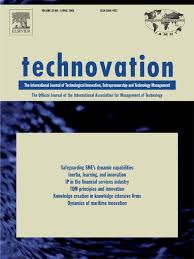
What Drives Innovation Output from Subsidized R&D Cooperation? — Project-level Evidence from Germany
Using a large dataset of 406 subsidized R&D cooperation projects, we provide detailed insights into the relationship between project characteristics and innovation output. Patent applications and publications are used as measures for the innovation output of an R&D project. We find that large-firm involvement is strongly positively related with the number of patent applications, but not with the number of publications. Conversely, university involvement has positive effects on projects’ innovation output in terms of the number of publications but not in terms of patent applications. In general, projects’ funding as measure of projects’ size is an important predictor of the innovation output of R&D cooperation projects. No significant effects are found for the number of partners as (an alternative) measure of projects’ size, for spatial proximity between cooperation partners, for the involvement of a public institute for applied research, and for prior cooperation experiences. We derive conclusions for the design of R&D cooperation support schemes.




